A 320-kg glider is being pulled by a 1,860-kg jet along a horizontal runway with an acceleration of a = 2.20 m/s2 to the right as in the figure below. Find the following. (a) the magnitude of the thrust provided by the jet's engines (b) the magnitude of the tension in the cable connecting the jet and glider
A 320-kg glider is being pulled by a 1,860-kg jet along a horizontal runway with an acceleration of a = 2.20 m/s2 to the right as in the figure below. Find the following. (a) the magnitude of the thrust provided by the jet's engines (b) the magnitude of the tension in the cable connecting the jet and glider
Principles of Physics: A Calculus-Based Text
5th Edition
ISBN:9781133104261
Author:Raymond A. Serway, John W. Jewett
Publisher:Raymond A. Serway, John W. Jewett
Chapter5: More Applications Of Newton’s Laws
Section: Chapter Questions
Problem 50P: A 5.00-kg block is placed on top of a 10.0-kg block (Fig. P5.50). A horizontal force of 45.0 N is...
Related questions
Topic Video
Question
100%
A 320-kg glider is being pulled by a 1,860-kg jet along a horizontal runway with an acceleration of a = 2.20 m/s2 to the right as in the figure below. Find the following.
(a) the magnitude of the thrust provided by the jet's engines
(b) the magnitude of the tension in the cable connecting the jet and glider
Expert Solution
This question has been solved!
Explore an expertly crafted, step-by-step solution for a thorough understanding of key concepts.
This is a popular solution!
Trending now
This is a popular solution!
Step by step
Solved in 3 steps with 3 images

Knowledge Booster
Learn more about
Need a deep-dive on the concept behind this application? Look no further. Learn more about this topic, physics and related others by exploring similar questions and additional content below.Recommended textbooks for you
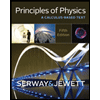
Principles of Physics: A Calculus-Based Text
Physics
ISBN:
9781133104261
Author:
Raymond A. Serway, John W. Jewett
Publisher:
Cengage Learning
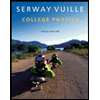
College Physics
Physics
ISBN:
9781285737027
Author:
Raymond A. Serway, Chris Vuille
Publisher:
Cengage Learning
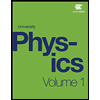
University Physics Volume 1
Physics
ISBN:
9781938168277
Author:
William Moebs, Samuel J. Ling, Jeff Sanny
Publisher:
OpenStax - Rice University

Principles of Physics: A Calculus-Based Text
Physics
ISBN:
9781133104261
Author:
Raymond A. Serway, John W. Jewett
Publisher:
Cengage Learning

College Physics
Physics
ISBN:
9781285737027
Author:
Raymond A. Serway, Chris Vuille
Publisher:
Cengage Learning

University Physics Volume 1
Physics
ISBN:
9781938168277
Author:
William Moebs, Samuel J. Ling, Jeff Sanny
Publisher:
OpenStax - Rice University

College Physics
Physics
ISBN:
9781305952300
Author:
Raymond A. Serway, Chris Vuille
Publisher:
Cengage Learning
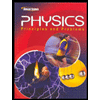
Glencoe Physics: Principles and Problems, Student…
Physics
ISBN:
9780078807213
Author:
Paul W. Zitzewitz
Publisher:
Glencoe/McGraw-Hill
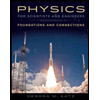
Physics for Scientists and Engineers: Foundations…
Physics
ISBN:
9781133939146
Author:
Katz, Debora M.
Publisher:
Cengage Learning